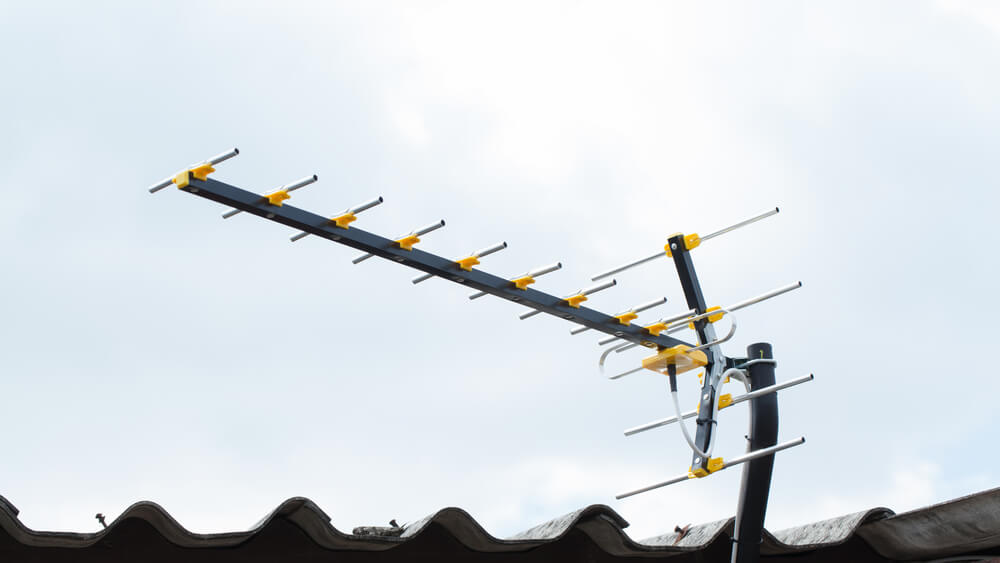With so many options, it can be difficult to choose the best TV antenna for my area. However, with some research and knowledge of your area, you may discover the ideal antenna for excellent TV reception.
This article will explain what to look for in an antenna and recommend options for various applications.
Different TV antennas
TV antennas come in various shapes and sizes, each designed for different reception needs. They come in so much variety that you need clarification. Indoor antenna, outdoor antenna, flat antenna, Yagi antenna, omnidirectional antenna, etc., are some popular names.
These are just a few examples of the several types of TV antennas available. The most suitable antenna for you will be determined by your location, the strength of local TV signals, and any obstacles that may interfere with the signal.
Ideal TV Antennas for Different Regions
These characteristics may vary regionally and geographically, depending on where the antennas are located. undefined
Urban areas
In the case of the cities, tall buildings can be barriers, that stops the transmission signals to reach your antenna. Thus the signals can be weak and the TV reception can be poor.
In addition, tightly packed urban areas feature many houses with antennas that produce congestion and interference which is the main cause of quality reduction of TV signal.
This is because of the confined space and obstacles in the urban area and it takes long time and much effort to find a proper place for your antenna to have better reception.
Antenna Suggestions: Indoor digital TV antennas are ideal for high signal locations. Look for models with signal amplifiers for improved reception.
Suburban areas
These are usually positioned farther away from the broadcast towers, which can result in lesser TV broadcasts. Terrain features such as hills or trees in suburban regions can also obstruct the line of sight between your antenna and the broadcast towers, making receiving a clear TV signal easier.
Antenna Suggestions: Outdoor TV antennas which are mounted on roofs or in attics are preferred in suburban areas. Opt for those with high gain to receive the signal better.
Rural areas
In these locations, the dislocation from the transmission towers may result in weak TV signals, requiring high-gain antennas to boost reception. Furthermore, the population density in rural areas is low, which in turn reduces the number of TV broadcast towers, leading to poor coverage for some households which experience a poor quality of reception.
Antenna Suggestions: Long-range outdoor antennas with high gain will have to be deployed. Directional antennas are able to be pointed upon broadcast towers, which would lead to a better reception.
Coastal areas
Such areas have their specific problems which are caused by salt water breaking through the signal, and affecting the quality of the TV signal. The weather conditions found along the coast, like strong winds and salt spray, can easily break through the antenna, ultimately causing poor TV reception.
Antenna Suggestions: Marine antennas that are resistant to saltwater interference and are specially designed for the harsh coastal weather.
Mountainous areas
The mountains are able to block the TV signals and this can result as weak or no signals received. Moreover, the colitation of signals coming off mountains can give rise to multipath interference in which the signals are received by the antenna at slightly different times which degrade the quality of the TV signal.
Antenna Suggestions: High-gain antennas with signal amplifiers are capable to provide assistance in case of signal blockages and interference.
Remote areas
Those territories usually lack television broadcast towers so the waves of TV signals may be weak. Additionally, the scattered population of remote zones translates into lower households to share the dish with, meaning higher costs for those individuals attempting to upgrade their TV reception.
Antenna Suggestions: Satellite dishes for reliable TV reception in remote areas.
To fix these TV antenna problems in different areas, you might need special solutions like high-gain antennas or signal boosters. It’s important to research and pick the right antenna based on your area’s specific challenges.
Consulting the professional antenna installer about the “best TV aerial for my area” would be beneficial as it would help you in finding the right solution for your area.
How to decide the best TV antenna for my area
However, finding the best TV antenna Australia is necessary so that you can receive good signals. undefined
Check Where You Live: Try to learn which one is the broadcast towers around your house. Tools like TV Fool or AntennaWeb can provide you with this kind of information.
Look at Your Surroundings: Confirm whether high hurdles like mountains, skyscrapers, and trees warrant signal blockade.
Choose the Right Antenna Type: According to whether your area has strong signals or not, if there are any obstacles or not; you may need either the indoor antenna for strong signals or the outdoor antenna for weak signals or if there are obstacles.
Pick the Right Range: Antennas are offered in different ranges so decide on the one that matches your proximity to broadcast towers. If you’re not too close, you may require a long-range antenna.
Think About Direction: If all your local TV stations are in one direction the directional type antenna works fine to point at the towers than one that picks up signals from all directions.
Check Reviews: Check for antennas with positive reviews and options like signal amplification or noise cancellation, especially if you reside in an area where signals are weak or are interfered with.
Get Help if You Need It: Should you experience difficulty in picking the antenna or forget how to install it, be ready to seek the help of a professional installer. They can see your position and give you a proper antenna and the installation guidance.
After the completion of the process, you find the best digital TV antenna Australia for your area so you can enjoy clear TV reception.
Conclusion
Ensure the right TV antenna for your location functions optimally, you need to take several things into account, e.g. signal strength, antenna range, directionality, gain, and interferences. Through determining these factors and choosing just the right antenna, perfect TV reception in the area can be accomplished.
It is also worth remembering that I can always come back to this website and ask for further clarification if I have any doubts- let’s say the question is what is the best TV antenna for my area? It is worth consulting with antenna specialists to make sure you pick the most suitable TV antenna Melbourne has.




